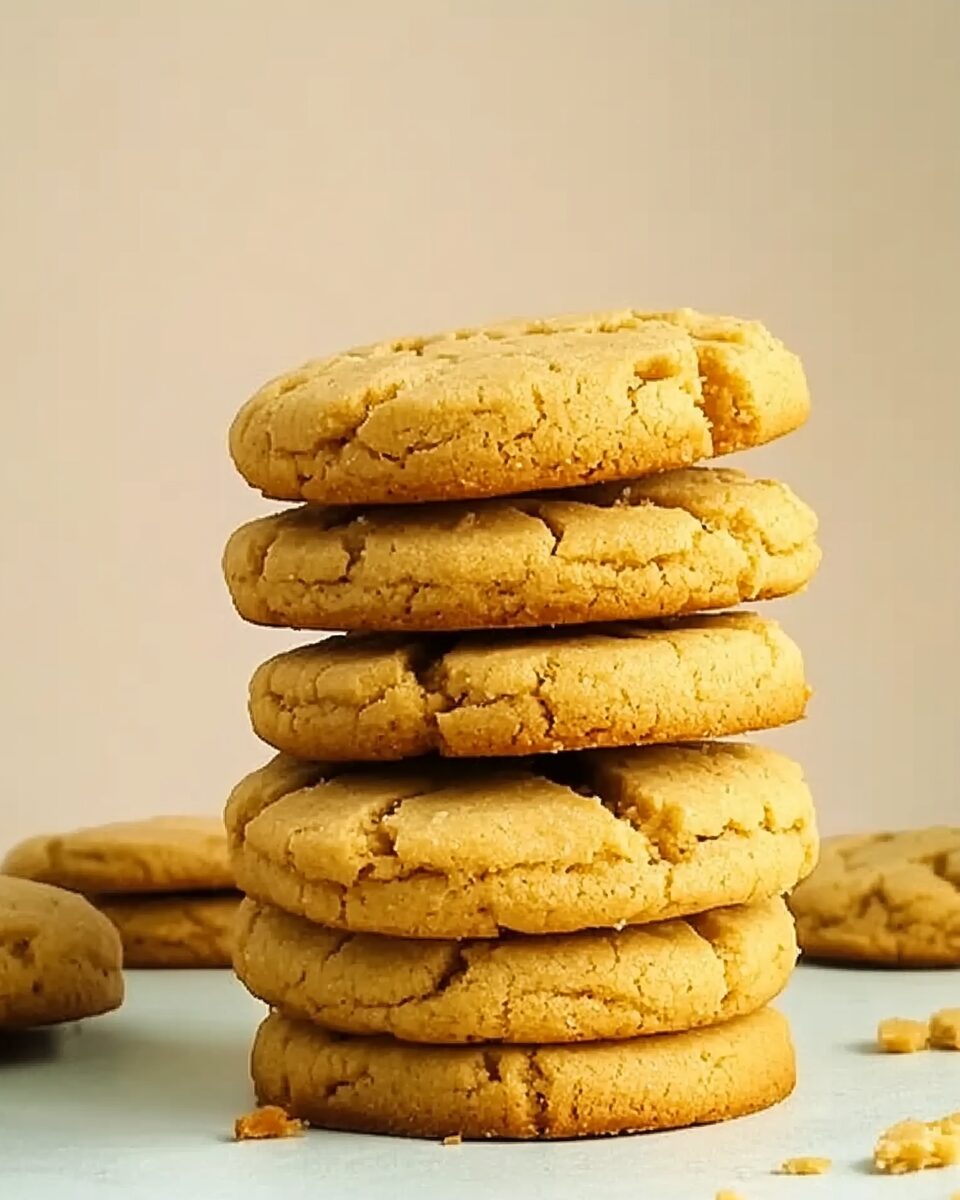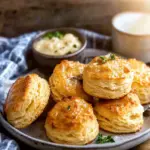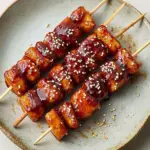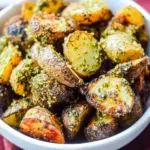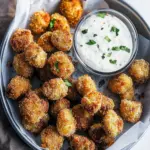These old-fashioned peanut butter cookies bring comfort in every bite. With a soft, chewy center and delicately crisp edges, they deliver the perfect balance of sweet and salty peanut butter goodness.
Made using pantry staples and no butter, they’re an easy go-to for last-minute dessert cravings or nostalgic family baking sessions. This recipe is a tribute to vintage baking traditions — quick, hearty, and full of love.
Full recipe:
Ingredients:
-
1 cup shortening
-
1 cup smooth peanut butter
-
1 cup granulated sugar
-
1 cup packed brown sugar
-
3 large eggs, room temperature
-
3 cups all-purpose flour
-
2 teaspoons baking soda
-
1/4 teaspoon salt
Directions:
-
Preheat oven to 375°F (190°C).
-
In a large bowl, cream together the shortening, peanut butter, granulated sugar, and brown sugar until light and fluffy (about 5-7 minutes).
-
Beat in the eggs, one at a time, mixing well after each addition.
-
In a separate bowl, combine the flour, baking soda, and salt.
-
Gradually add the dry ingredients to the creamed mixture and mix thoroughly.
-
Roll dough into 1-1/2 inch balls and place 3 inches apart on ungreased baking sheets.
-
Flatten each ball using a fork in a criss-cross pattern for that classic peanut butter cookie look.
-
Bake for 10-15 minutes, or until edges are lightly golden.
-
Cool cookies on a wire rack before serving.
Prep Time: 15 minutes | Cooking Time: 10–15 minutes | Total Time: 25–30 minutes
Kcal: 180 per cookie | Servings: Approximately 36 cookies
The History Behind the Criss-Cross Pattern
The visual signature of old-fashioned peanut butter cookies is the famous fork-pressed criss-cross pattern on the top. This isn’t just decorative—it serves a practical purpose. Peanut butter dough is dense and heavy, and the pattern helps the cookies bake more evenly by flattening them and allowing better heat distribution. The tradition began in the 1930s when peanut butter was gaining popularity in the U.S., and home bakers needed a way to deal with the cookie dough’s stubborn thickness. The fork-press technique has since become synonymous with the peanut butter cookie itself, a small ritual that’s part of the cookie’s charm.
Why Shortening Instead of Butter?
One of the defining features of this recipe is the use of shortening rather than butter. While butter is a go-to fat in most baking, shortening offers specific advantages in cookies like these. It has a higher melting point and doesn’t contain water, unlike butter, which is about 16–18% water. This absence of moisture means that cookies made with shortening tend to be taller, puffier, and lighter in texture. They also spread less in the oven, retaining a classic round cookie shape.
The result is a cookie that’s crisp on the outside, soft in the middle, and richly flavored. Using shortening also helps highlight the peanut butter itself, since there’s no butter to compete with its flavor. This is one of the reasons why many traditional or “old-school” recipes stick with shortening—it’s about preserving that iconic texture and flavor balance.
Peanut Butter: The Star Ingredient
Naturally, the type of peanut butter used has a significant impact on the final cookie. Smooth peanut butter is the traditional choice for an even texture and classic flavor. It blends easily into the dough and gives the cookies a silky consistency. That said, using crunchy peanut butter is an acceptable and often welcome variation for those who prefer texture in every bite.
Some bakers opt for natural peanut butter, but it’s important to be cautious here. Natural peanut butters can separate and contain more oil, which may affect the dough’s consistency and the cookie’s ability to hold shape. For best results, a standard shelf-stable peanut butter is preferred.
Texture and Flavor Profile
What truly sets old-fashioned peanut butter cookies apart is their texture. These cookies are tender but not crumbly like shortbread, chewy yet not doughy like a chocolate chip cookie. The use of both granulated and brown sugar creates a dynamic sweetness—crisp edges from the white sugar and a deep, caramel-like softness from the molasses in brown sugar.
This textural contrast is enhanced by the leavening action of baking soda, which gives the cookies their delicate rise and lightness despite the rich ingredients. Each bite delivers the perfect blend of nutty, sweet, and slightly salty, making them incredibly satisfying and not overwhelmingly sugary.
Ideal for Any Occasion
Peanut butter cookies are as versatile as they are delicious. They make the perfect afternoon snack, bake sale contribution, or dessert table staple. They store well at room temperature and even freeze beautifully, whether in dough or baked form. That means you can batch prepare them in advance and bake or serve them as needed—ideal for busy households or anyone who loves a fresh cookie with minimal prep.
They also make a thoughtful and inexpensive homemade gift. Pack them in a tin with parchment paper or wrap them in cellophane with a bow, and you have a warm, personal gift for holidays, housewarmings, or care packages.
Modern Variations and Twists
While the original old-fashioned recipe is beloved, it’s also highly adaptable. Bakers today often add their own twists to the classic:
-
Dipped cookies: A half dip in melted dark or milk chocolate, or even white chocolate, adds elegance and richness.
-
Stuffed versions: Some incorporate mini peanut butter cups, chocolate chips, or even a dollop of jam in the center for a playful surprise.
-
Peanut butter sandwich cookies: Using two cookies with a peanut butter or chocolate filling makes for a decadent dessert that rivals any store-bought option.
-
Gluten-free adaptations: With the right substitutions, such as almond flour or a mix of rice and tapioca flours, these cookies can be made gluten-free while still retaining their beloved taste and texture.
Tips for the Best Results
Even simple recipes benefit from a few pro tips:
-
Room temperature eggs incorporate more smoothly into the dough and help the cookies rise properly.
-
Do not overmix once the flour is added—this can lead to tough cookies.
-
Press the dough before baking with a fork dipped in sugar to prevent sticking and enhance visual appeal.
-
Allow cookies to rest on the baking sheet for a minute or two before transferring to a wire rack; this helps them set and prevents breakage.
-
Use a cookie scoop for uniform size and consistent baking.
Common Questions Answered
Can I freeze the dough?
Absolutely. Scoop the dough into balls, place them on a tray to freeze individually, then transfer to a freezer bag. Bake directly from frozen, adding a minute or two to the baking time.
How long do they keep?
Stored in an airtight container, they stay fresh for up to a week. For longer storage, freezing is best.
Can I make them vegan?
Yes! Use vegetable shortening and replace each egg with 1/4 cup unsweetened applesauce or a flax egg (1 tablespoon ground flaxseed + 3 tablespoons water).
Can I use other nut butters?
You can substitute almond or sunflower seed butter, but the texture and flavor may change slightly. These substitutes can be useful for those with peanut allergies.
Conclusion: A Timeless Classic for Every Baker
Old-fashioned peanut butter cookies aren’t just a treat—they’re a connection to the past. With every bite, you’re reminded of kitchen counters dusted with flour, warm ovens on cold days, and family moments shaped around a shared love for food. Their simple ingredients and reliable process make them an ideal introduction for beginner bakers, while their nostalgic charm and satisfying flavor ensure seasoned pros never tire of making them.
Whether you’re baking a batch for a holiday platter or just because you need a pick-me-up on a rainy afternoon, these cookies deliver comfort, flavor, and joy. They’re proof that the simplest recipes are often the most treasured—and that old-fashioned never goes out of style.

